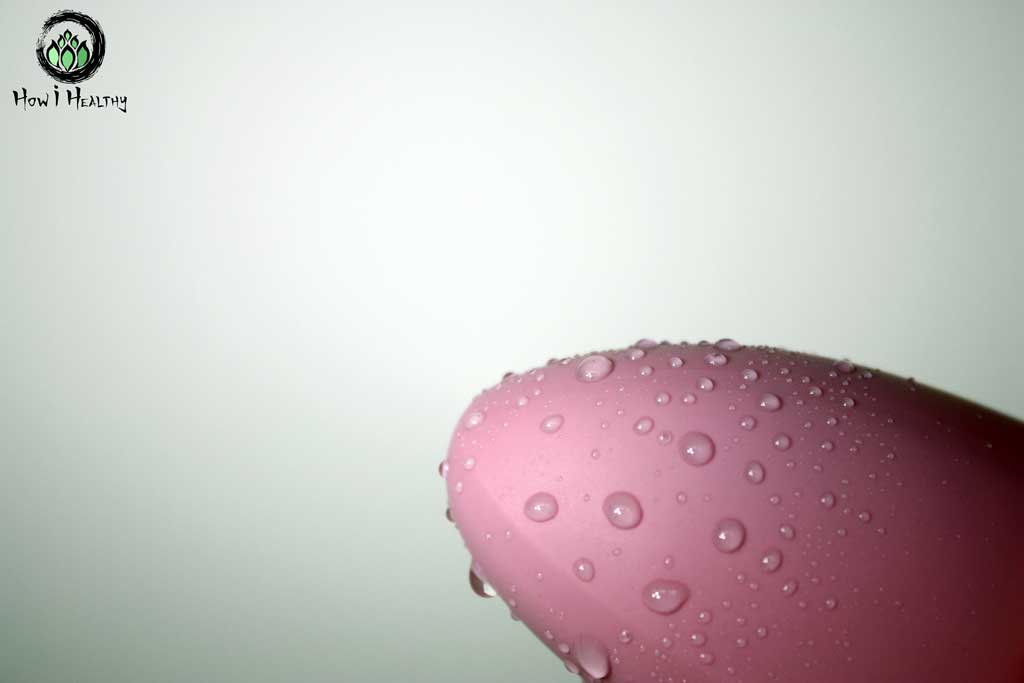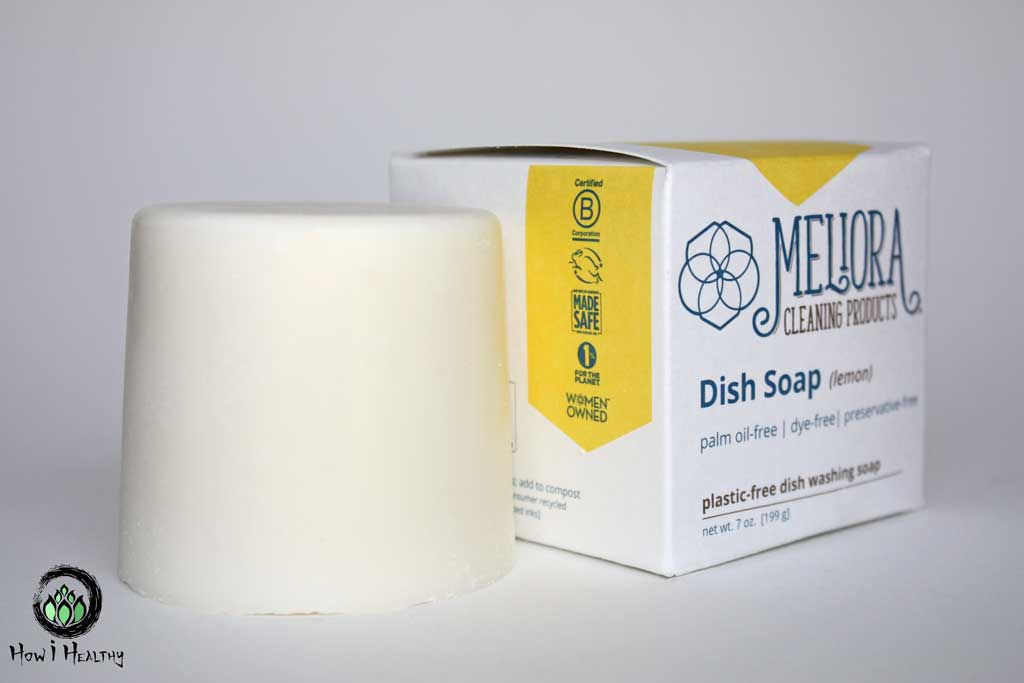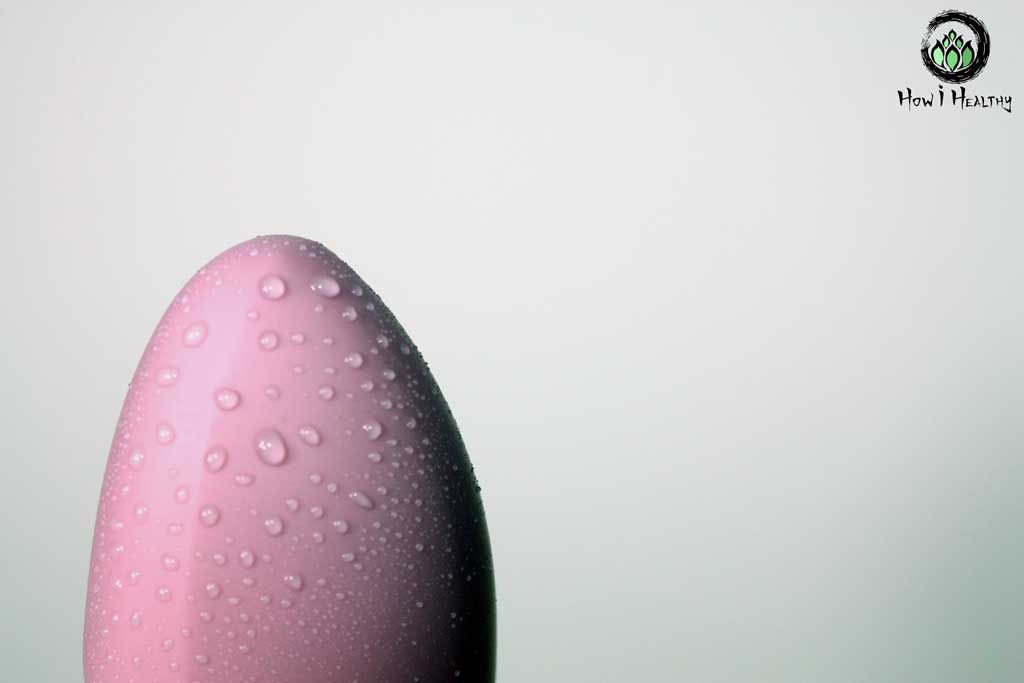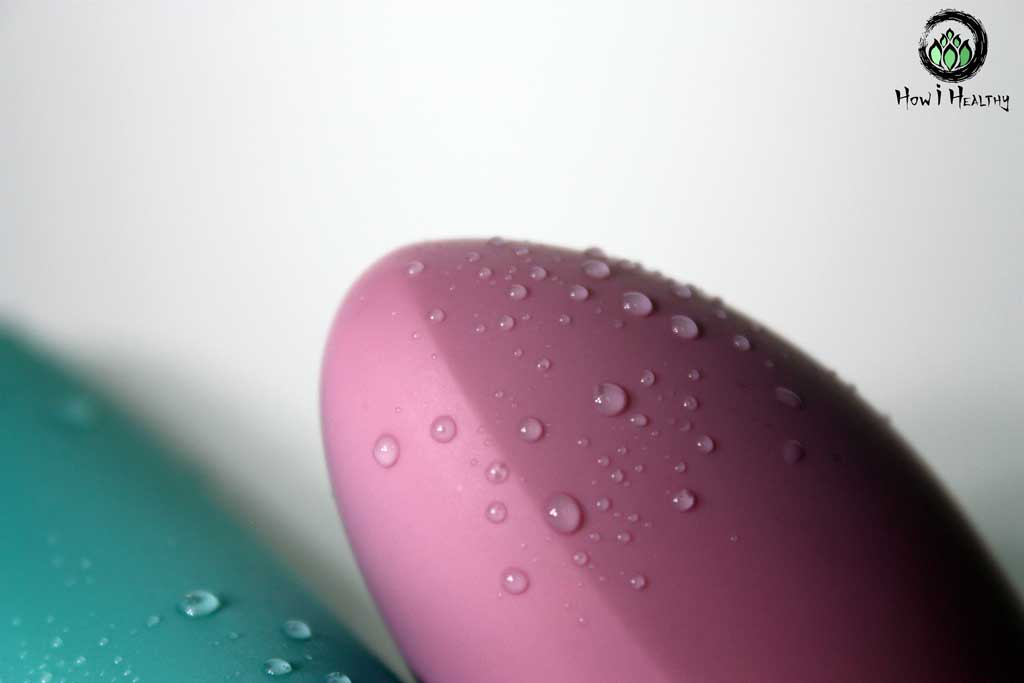In This Article, We'll Cover:
- What’s the Difference Between “Clean” & “Sanitized”
- Which Cleaning Methods are Good for You and the Earth
- Which Cleaning Methods are Worth Your Time & Money
- The Best Natural Sex Toy Cleaner & why
- Why I Don’t Use UV Light Boxes or UV Wands
What Does “Clean” Even Mean?
So, you got that nice Sustainable & Ethical Sex Toy and gave it a workout with some Plant-Based Lube.
Now what?
How do you clean it?
Well, there’s no evidence-based cleaning recommendations for sex toys. So, we’re on our own to figure it out. (30)
First, let’s get some basics covered.
Clean, disinfect, sanitize, and sterilize have different meanings.
- “Clean”
- Removes visible contaminates, i.e., body fluid, lube residue. Cleaning can reduce microorganisms by washing them away, but it does not kill them. Cleaning with soap and water is as effective as anti-bacterial soaps. And without the side effects. Take that antibiotic resistance! (1, 4, 25, 26, 27, 28, 30)
- “Sanitize”
- Kills ~99% of bacteria. Boom. (4)
- “Disinfect”
- Kills ~99.999% of bacteria, pathogens, and viruses. But not bacterial spores. (1, 3, 4)
- “Sterilize”
- Complete elimination of all microbial life. Including bacteria, viruses, fungi, and spores. (1, 2)
Let’s add an unofficial definition.
Clean also means eco-friendly and body-friendly. Because, many toy cleaners aren’t clean.
Problems with Sex Toy Cleaners
Sex toy cleaners can contain:
- Antibacterial Quats
- Fragrance
- Glycerin
- Triclosan
- Parabens
- Petrochemicals, PEGs, Propylene Glycol
(5, 19)
With a bactericidal list like that, “cleaners” could classify as sanitizers instead.
Because of that, these chemicals pose hazards to the body and/or the Earth. (4, 6, 7, 15, 16, 17, 18, 19)
Chemical toy cleaners might kill off bacteria of toys. But any residue could kill the helpful bacteria of our bodies too. More than that, studies link antibacterials to reproductive harm, birth defects, and antibiotic-resistant bacteria. (4, 6, 7, 15, 16, 17, 18, 20)
Compound that exposure risk with the highly permeable and absorbent tissues of the mouth, anus, and vagina. (8, 9, 10, 11)
Let’s and one more layer. Some chemicals, like quats, build up on surfaces. They stick around. Up to months. And are hard to remove. So, just because that disinfectant dried, it doesn’t mean the chemicals, like quats, are gone. (15)
My Guide to Everyday Chemicals dives more into these problems and what you can do about it.
My Favorite Natural Sex Toy Cleaner

So, some cleaners ain’t so clean.
But neither are dirty sex toys.
And How i Healthy is all about healthy body, healthy planet, & healthy sex.
So, what to do?
Know Your Toys
First, a cleaner needs to be compatible with the sex toy. Not all cleaners work with all sex toys.
Even if you have an awesome, Sustainable & Ethical Sex Toy it’s still important to:
- Follow the specific product instructions for best cleaning practices. Some toys can be boiled, some can’t. Some have specific cleaning methods/solutions.
- Inspect toys for integrity. No tears, discoloration, change in texture, or off smells.
- Consider your toy. How do you use it? Which body part(s), solo use vs. partner(s). A toy might need sanitizing, not just cleaning, depending on how it’s used.
- Reach out to a sex-positive shop or the manufacturer if you have any questions or concerns about your toy.
Clean With Soap & Water

Yep. Good old soap & water. Simple.
It’s the simplest natural sex toy cleaner there is.
For most toys, situations, and Plant-Based Lube, soap and water are enough. (30)
Consult your toy manufacturer to be sure.
Soap can contain some of the same chemicals as sex toy cleaners.
Opt for fragrance-free, non-antibacterial soaps.
I use this Unscented Dish Soap with a washcloth. There’s no fragrance, parabens, or other junk. It’s the same stuff I wash my dishes with. It’s also a bar soap, so no water added. I can add my own!
But most natural soaps will work too.
You don’t need some fancy spray. I personally find soap and water is a better clean too. Really washing a sex toy under water gets more sexy time stuff off my toys than simply spraying stuff on it.
Dry It Off
I know. Not very profound or original.
Some toys air dry. And some need a lint-free towel pat down. Every toy is different. Instead of guessing, just go to the source, the manufacturer, and follow their recommendations.
Need to Sanitize?
Some reasons to sanitize:
- Folks with an STI, HPV, or other transmittable infection used the toy.
- Untested folks used the toy.
- Folks who want to sanitize electrical sex toys. Example: toys that can’t be boiled.
If you’re looking to sanitize, not just clean, there are a few options.
It bubbles down to your specific toy. Follow specific product recommendations for sanitizing.
Another option? Using a condom as a toy barrier. This won’t work for all types of toys. But, if you’ve got a condom-compatible toy, it can help prevent transmittable bacteria from getting on the toy in the first place.
Why I Don't Use UV Wands/Boxes
What about UV light?
UV light sanitizers are all the rage. Folks can sanitize almost anything these days. And sex toys are no exception.
I looked into UV light sanitizers.
It looks like promising technology. An evidenced-based option for medical, laboratory, and commercial situations. And, an alternative to chemicals linked to antibacterial resistance and super bugs. (24, 31, 32,34)
Evidence-based and effective. What’s not to love about UV light?
Well. The discrepancy between medical-grade UVC devices and what consumers, like us, have access to.
In short, what we can buy might not be as effective. (38, 39)
But, let’s back up.
First, what is a UV light? Electromagnetic radiation emitted from the sun. There are three kinds of UV light. All three, UVA, UVB, and UVC are carcinogens. (36, 37)
UVA and UVB light are often associated with Sunscreen, radiation, skin cancer, and DNA damage. (33)
Then there’s UVC light, considered the most dangerous. UVC are short-wavelength radiation. Exposure can damage the DNA of bacteria, viruses, and pathogens. Effectively killing the microorganisms. That’s why folks use it to kill pathogens in medical settings. (24, 34)
UVC light, unlike UVA and UVB, does not reach the Earth’s surface. (24, 34)
But technology can reproduce it. UVC is a favorite for sanitation in medical settings. UVC is often more effective than manual disinfection. (31, 32)
Okay, so UVC light is science-backed and effective. The issue is, are consumer products as effective as the hospital ones?
As of this writing, probably not. (38, 39)
What’s worse? Safety experts like UL© and the FDA urge caution against consumer targeted UVC products. Many UVC products do not have proper hazard disclosures, lab verified results, safety features, or third-party safety certifications that. Most commercial products do. (38, 39)
Here’s the thing:
Without containment or proper precautions, UVC can damage eyes, cause erythema (skin damage similar to a sunburn) and emit ozone that can damage the lungs. Over-exposure can happen in seconds and can take days to manifest. (38, 39, 40)
Because of these risks, uncontained UVC products are not eligible for UL© safety certifications. (24, 38, 40)
That’s right. Uncontained UVC products. That means wands, handheld devices, lamps, and portable sterilizers can’t file for UL© certification. UL© won’t even look at them because of the potential hazards & risks. But, with a quick internet search, you’ll be bombarded with uncontained options.
The expanding consumer market for UVC products concerns experts. Calls for regulation, safety standards, and certification have gone unmet. (43, 40)
It gets worse.
“EPA Certified” UVC products are misleading. The product is not certified. The company itself is registered with the FDA as a pesticide producing establishment. UVC is technically a pesticide device. Companies who make pesticide devices can be FDA registered, but the FDA does not certify UVC products. (38)
So, with all that said. If you still want a UVC sanitizer, here’s a few things you can do:
- Use medical grade. Might not be a real option as a consumer. These tend to be rather expensive, if even available, to regular consumers.
- Avoid handheld devices, wands, and lamps.
- If you do use a handheld device, and you can see the light during use, avoid looking at the light. Don’t use the device around animals and children. They might not divert their gaze. Don’t touch the light either.
- Use contained UVC products. Light boxes close completely and keep UVC light contained. Some boxes have auto turn-offs when the lid is lifted or locks.
- Clean your toys before using a UVC light. UVC does not replace cleaning. Things like fluid and lube can block UVC light, making it less efficient.
- UVC has limited effectiveness on porous materials and fabric. You’ll get better results with non-porous materials like steel and glass. (42, 43)
How to Store Sex Toys
Storage for Sex Toys
Toys need cozy, clean, and dry homes. Not thrown into the bedside drawer or kept in a moist and humid bathroom.
Lint or dust can stick to some toys. Humidity can degrade some materials or electronics.
Store toys separately in cloth lint-free bags. Cotton, satin, and silk are options. Some toys even come with storage bags.
Avoid water-resistant fabrics as these could be sprayed with PFAS (forever chemicals). We don’t need PFAS all over our sex toys.
When your toys are individually snuggled in a cloth bag, where they go is up to you. Bedside drawer, box, or another bag. Just avoid high moisture/temperature places, like bathrooms.
The Takeaway Message

As unoriginal as it sounds, clean your sex toys.
How? That depends on the toy you have.
In general:
- I stay clear of sex toy cleaners. Many toy cleaners are just chemicals packaged in plastic bottles. Not so good for the body or environment. (4, 6, 7, 15, 16, 17, 18, 19)
- For most toys, humble soap and water is good enough for cleaning. (30)
- I use a simple Unscented Dish Bar Soap as my natural sex toy cleaner.
- But, if you’re looking to sanitize (kill bacteria), that can complicate things. Sex toys come in a range of materials, so best practices vary.
- Follow manufacturer cleaning/sanitizing/care recommendations of your specific toy.
- After cleaning, store toys separately lint-free cloth bags.
- Avoid using “water-proof/resistant” storage bags, as these may be coated in PFAS (forever chemicals).
- Avoid leaving toys in moist/hot conditions, like the bathroom.
As for UVC light sanitizers, the technology is effective and preferred in commercial settings. Like hospitals. (24, 34)
But I’m skeptical of consumer-targeted products.
Safety experts like UL© and the FDA urge caution against consumer targeted UVC products. UVC light can damage eyes and burn the skin. In seconds of exposure. Without us even realizing it. (38, 39, 40)
Health hazards aside, the effectiveness of consumer targeted UVC products isn’t well documented. There’s not enough data, regulation, certification, safety standards, lab results, or personal need for me to use one. (38, 39, 40)
I don’t have any UVC product recommendations, but if you’re in the market, here’s some tips:
- Avoid handheld devices, like wands. Choose contained light boxes. These can be UL© certified, unlike wands. Not all light boxes are certified though.
- Don’t look at or touch the UVC light. Keep device away from children and animals.
- Non-porous, glass, and steel sex toys sanitize best. Porous materials and fabrics have too many tiny holes where the UVC can’t penetrate. (42, 43)
- Clean your toys with soap and water before sanitizing.
- When in doubt of how to sanitize a sex toy. As the manufacturer.
Go on and make a mess! Just clean up afterwards.
That’s How i Healthy!
-Artemis
- Mohapatra, S.. “Sterilization and Disinfection.” Essentials of Neuroanesthesia(2017): 929–944. doi:10.1016/B978-0-12-805299-0.00059-2. https://www.sciencedirect.com/science/article/abs/pii/B9780128052990000592
- Yoo, Jin Hong. “Review of Disinfection and Sterilization – Back to the Basics.” Infection & chemotherapy 50,2 (2018): 101-109. doi:10.3947/ic.2018.50.2.101. https://pubmed.ncbi.nlm.nih.gov/29968977/
- “Sliquid Shine – NSF Organic Toy Cleaner.” Sliquid Natural Intimate Products, sliquid.com/shop/sliquid-organics/organics-aloe-based/sliquid-shine-toy-cleaner/.
- “Green Cleaning, Sanitizing, and Disinfecting: A Curriculum for Early Care and Education.” Green Cleaning, Sanitizing, and Disinfecting Toolkit for Early Care and Education, UCSF Institute for Health & Aging, epa.gov/sites/production/files/documents/ece_curriculumfinal.pdf
- “Quats and Other Chemicals of Concern in Antibacterial Sex Toy Cleaners – WVE.” Women’s Voices for the Earth, womensvoices.org/quats-and-other-chemicals-of-concern-in-antibacterial-sex-toy-cleaners/
- Olszewska, M A et al. “Assessment of the bacterial viability of chlorine- and quaternary ammonium compounds-treated Lactobacillus cells via a multi-method approach.” Journal of applied microbiology 126,4 (2019): 1070-1080. doi:10.1111/jam.14208. https://pubmed.ncbi.nlm.nih.gov/30664312/
- D’Cruz, Osmond J et al. “A study of the potential of the pig as a model for the vaginal irritancy of benzalkonium chloride in comparison to the nonirritant microbicide PHI-443 and the spermicide vanadocene dithiocarbamate.” Toxicologic pathology 33,4 (2005): 465-76. doi:10.1080/01926230590959866. https://pubmed.ncbi.nlm.nih.gov/16036864/
- Buttar, H S. “Transvaginal Absorption and Disposition of Nonoxynol-9 in Gravid Rats.” Toxicology Letters, U.S. National Library of Medicine, Oct. 1982, https://pubmed.ncbi.nlm.nih.gov/6293122/
- Tourgeman, David E., et al. “Serum and Tissue Hormone Levels of Vaginally and Orally Administered Estradiol.” American Journal of Obstetrics and Gynecology, vol. 180, no. 6, 1999, pp. 1480–1483., doi:10.1016/s0002-9378(99)70042-6.. https://pubmed.ncbi.nlm.nih.gov/10368494/
- Needham, Shawn, and Shane Needham. “Case Study: Absorption of Testosterone Cream via Scrotal Delivery.” International Journal of Pharmaceutical Compounding, U.S. National Library of Medicine, 2018, https://pubmed.ncbi.nlm.nih.gov/30384346/
- Gupta, P.J. “Suppositories in Anal Disorders: a Review.” https://pubmed.ncbi.nlm.nih.gov/17970232/
- Duran N, Temiz M, Duran GG, Eryılmaz N, and Jenedi K. (2014) Relationship between the resistance genes to quaternary ammonium compounds and antibiotic resistance in staphylococci isolated from surgical site infections. Medical Science Monitor. 2;20:544-50. April 2014. https://www.ncbi.nlm.nih.gov/pmc/articles/PMC3983099/
- Zou L, Meng J, McDermott PF, Wang F, Yang Q, Cao G, Hoffmann M, Zhao S. (2014) Presence of disinfectant resistance genes in Escherichia coli isolated from retail meats in the USA. Journal of Antimicrobial Chemotherapy. 69(10):2644-9. October 2014. https://pubmed.ncbi.nlm.nih.gov/24908046/
- Sundheim G, Langsrud S, Heir E, and Holck AL (1998) Bacterial resistance to disinfectants containing quaternary ammonium compounds. Holck International Biodeterioration & Biodegradation. Volume 41, Issues 3–4, pp: 235-239. 1998. https://www.sciencedirect.com/science/article/abs/pii/S0964830598000274
- Hunt, P (2008) Lab disinfectant harms mouse fertility. Nature. Vol. 453: 964. June 2008. https://pubmed.ncbi.nlm.nih.gov/18563110/
- Melin VE, Potineni H, Hunt P, Griswold J, Siems B, Werre SR, and Hrubec TC (2014) Exposure to common quaternary ammonium disinfectants decreases fertility in mice. Reproductive Toxicology; 50: 163–170. December 2014. https://pubmed.ncbi.nlm.nih.gov/25483128/
- Melin VE, Melin TE, Dessify BJ, Nguyen CT, Shea CS, and Hrubec TC (2016) Quaternary ammonium disinfectants cause subfertility in mice bytargeting both male and female reproductive processes. Reproductive Toxicology; 59: 159–166. December 2016. https://pubmed.ncbi.nlm.nih.gov/26582257/
- Hrubec TC, Melin VE, Shea CS, Ferguson EE, Garofola C, Repine CM, Chapman TW, Patel HR, Razvi RM, Sugrue JE, Potineni H, Magnin-Bissel G, and Hunt PA (2017) Ambient and Dosed Exposure to Quaternary Ammonium Disinfectants Causes Neural Tube Defects in Rodents. Birth Defects Research 109:1166–1178, 2017. https://onlinelibrary.wiley.com/doi/10.1002/bdr2.1064
- “Quaternary Ammonium Compound.” Quaternary Ammonium Compound – an Overview | ScienceDirect Topics, sciencedirect.com/topics/engineering/quaternary-ammonium-compound
- Weatherly, Lisa M, and Julie A Gosse. “Triclosan Exposure, Transformation, and Human Health Effects.” Journal of Toxicology and Environmental Health. Part B, Critical Reviews, U.S. National Library of Medicine, 2017, ncbi.nlm.nih.gov/pmc/articles/PMC6126357/
- Matulonga, Bobette et al. “Women using bleach for home cleaning are at increased risk of non-allergic asthma.” Respiratory medicine 117 (2016): 264-71. doi:10.1016/j.rmed.2016.06.019. https://pubmed.ncbi.nlm.nih.gov/27492540/
- “SUMMARIES OF WATER POLLUTION REPORTING CATEGORIES.” ATTAINS Parent Cause Category Summaries, EPA841-R-12-104, Oct. 2012, epa.gov/sites/production/files/2015-08/documents/34parentattainsdescriptions.pdf
- Anderson, T A et al. “A study of human papillomavirus on vaginally inserted sex toys, before and after cleaning, among women who have sex with women and men.” Sexually transmitted infections 90,7 (2014): 529-31. doi:10.1136/sextrans-2014-051558. https://pubmed.ncbi.nlm.nih.gov/24739872/
- “Products with Ultraviolet Radiation Testing and Certification.” UL, ul.com/services/ultraviolet-uvc-light-testing-and-certification
- Commissioner, Office of the. “Antibacterial Soap? You Can Skip It, Use Plain Soap and Water.” U.S. Food and Drug Administration, FDA, 2019, www.fda.gov/consumers/consumer-updates/antibacterial-soap-you-can-skip-it-use-plain-soap-and-water
- Raut, Samiksha A, and Robert A Angus. “Triclosan Has Endocrine-Disrupting Effects in Male Western Mosquitofish, Gambusia Affinis.” Environmental Toxicology and Chemistry, U.S. National Library of Medicine, June 2010, www.ncbi.nlm.nih.gov/pubmed/20821571
- “Triclosan.” National Center for Biotechnology Information. PubChem Compound Database, U.S. National Library of Medicine, https://pubchem.ncbi.nlm.nih.gov/compound/triclosan
- Kim, S A, et al. “Bactericidal Effects of Triclosan in Soap Both in Vitro and in Vivo.” The Journal of Antimicrobial Chemotherapy, U.S. National Library of Medicine, Dec. 2015, www.ncbi.nlm.nih.gov/pubmed/26374612/
- Pinto, Valdir Monteiro et al. “Sexually transmitted disease/HIV risk behaviour among women who have sex with women.” AIDS (London, England) 19 Suppl 4 (2005): S64-9. doi:10.1097/01.aids.0000191493.43865.2a. https://pubmed.ncbi.nlm.nih.gov/16249657/
- Rullo, Jordan E et al. “Genital vibration for sexual function and enhancement: best practice recommendations for choosing and safely using a vibrator.” Sexual and relationship therapy : journal of the British Association for Sexual and Relationship Therapy 33,3 (2018): 275-285. doi:10.1080/14681994.2017.1419558. https://pubmed.ncbi.nlm.nih.gov/33223961/
- Casini, Beatrice et al. “Evaluation of an Ultraviolet C (UVC) Light-Emitting Device for Disinfection of High Touch Surfaces in Hospital Critical Areas.” International journal of environmental research and public health. https://pubmed.ncbi.nlm.nih.gov/31554297/
- Andersen, B M et al. “Comparison of UV C light and chemicals for disinfection of surfaces in hospital isolation units.” Infection control and hospital epidemiology 27,7 (2006): 729-34. doi:10.1086/503643. https://pubmed.ncbi.nlm.nih.gov/16807849/
- Khan, Aiman Q et al. “Roles of UVA radiation and DNA damage responses in melanoma pathogenesis.” Environmental and molecular mutagenesis 59,5 (2018): 438-460. doi:10.1002/em.22176. https://pubmed.ncbi.nlm.nih.gov/29466611/
- Dai, Tianhong et al. “Ultraviolet C irradiation: an alternative antimicrobial approach to localized infections?.” Expert review of anti-infective therapy 10,2 (2012): 185-95. doi:10.1586/eri.11.166. https://www.tandfonline.com/doi/abs/10.1586/eri.11.166?journalCode=ierz20
- Fukunaga, T et al. “The effects of resistance training on muscle area and strength in prepubescent age.” The Annals of physiological anthropology = Seiri Jinruigaku Kenkyukai kaishi 11,3 (1992): 357-64. doi:10.2114/ahs1983.11.357. https://pubmed.ncbi.nlm.nih.gov/1642736/
- Science Mission Directorate. “Ultraviolet Waves” NASA Science. 2010. National Aeronautics and Space Administration. https://science.nasa.gov/ems/10_ultravioletwaves
- “Ultraviolet (UV) Radiation.” American Cancer Society, cancer.org/cancer/cancer-causes/radiation-exposure/uv-radiation.html
- Crist, Ry. “UVC Wands Kill Viruses. Experts Warn They’re Also a ‘Major Safety Issue’.” CNET, 20 Oct. 2020, cnet.com/home/smart-home/uvc-light-wands-kill-viruses-experts-warn-major-safety-issue-coronavirus-covid-19/
- Center for Devices and Radiological Health. “UV Lights and Lamps: Ultraviolet-C Radiation, Disinfection, and Corona.” S. Food and Drug Administration, FDA, www.fda.gov/medical-devices/coronavirus-covid-19-and-medical-devices/uv-lights-and-lamps-ultraviolet-c-radiation-disinfection-and-coronavirus
- Ultraviolet-C (UVC) Germicidal Devices: What Consumers Need to Know. National Electrical Manufacturers Association and the American Lighting Association, 2020, https://www.nema.org/docs/default-source/products-document-library/ct-26219573_uvc-germicidal-devices-flyer_vprint2bb45223a-9e5d-4844-a06b-ddecac78618f.pdf?Status=Master&sfvrsn=5ec33df8_3
- “Why Aren’t Ozone Generators, UV Lights, or Air Purifiers on List N? Can I Use These or Other Pesticidal Devices to Kill the Virus That Causes COVID-19?” EPA, Environmental Protection Agency, 7 Jan. 2021, epa.gov/coronavirus/why-arent-ozone-generators-uv-lights-or-air-purifiers-list-n-can-i-use-these-or-other
- Raeiszadeh, Milad, and Babak Adeli. “A Critical Review on Ultraviolet Disinfection Systems against COVID-19 Outbreak: Applicability, Validation, and Safety Considerations.” ACS Photonics0c01245. 14 Oct. 2020, doi:10.1021/acsphotonics.0c01245. https://pubs.acs.org/doi/10.1021/acsphotonics.0c01245
- Jureka, Alexander S et al. “Pulsed Broad-Spectrum UV Light Effectively Inactivates SARS-CoV-2 on Multiple Surfaces and N95 Material.” Viruses vol. 13,3 460. 11 Mar. 2021, doi:10.3390/v13030460. https://pubmed.ncbi.nlm.nih.gov/33799842/





